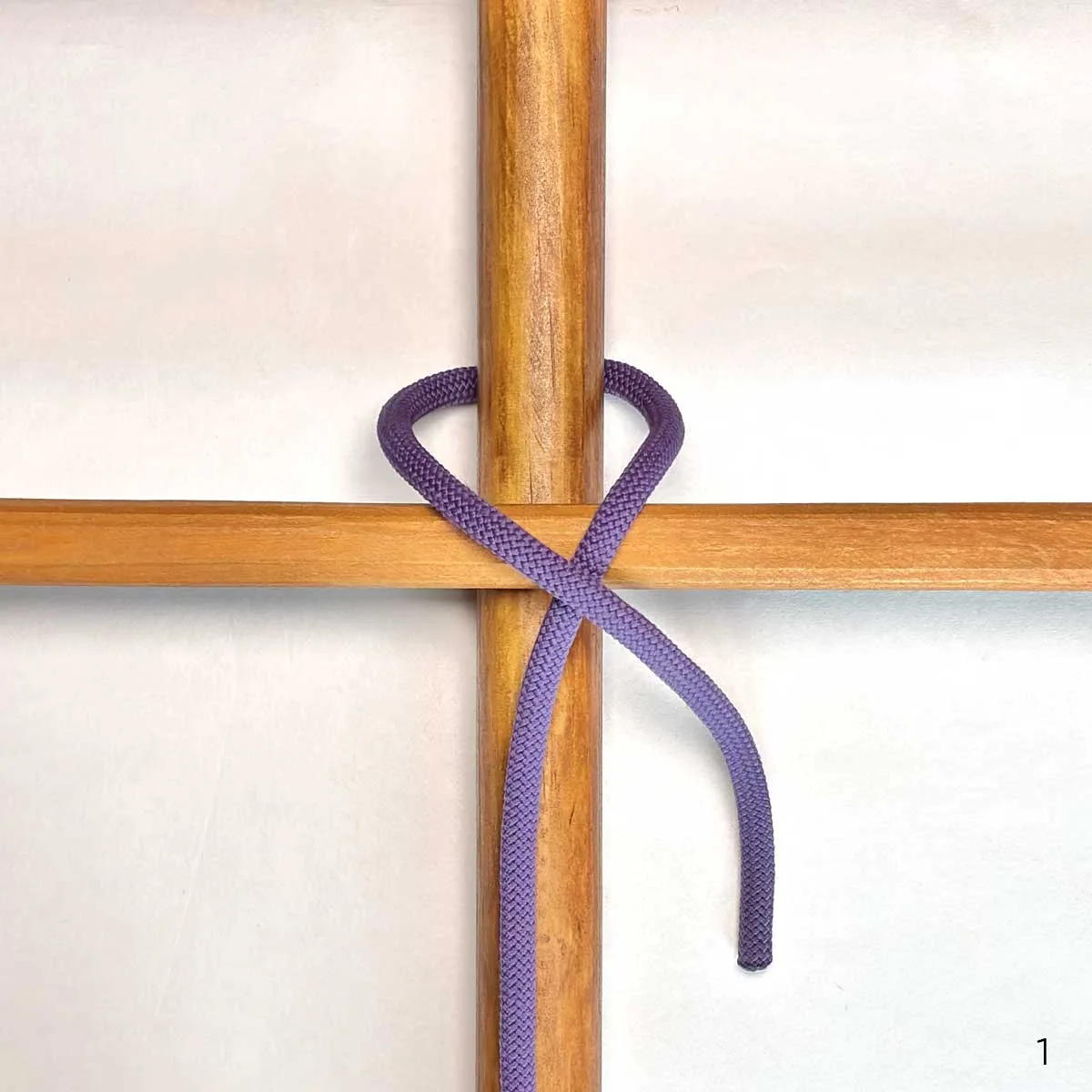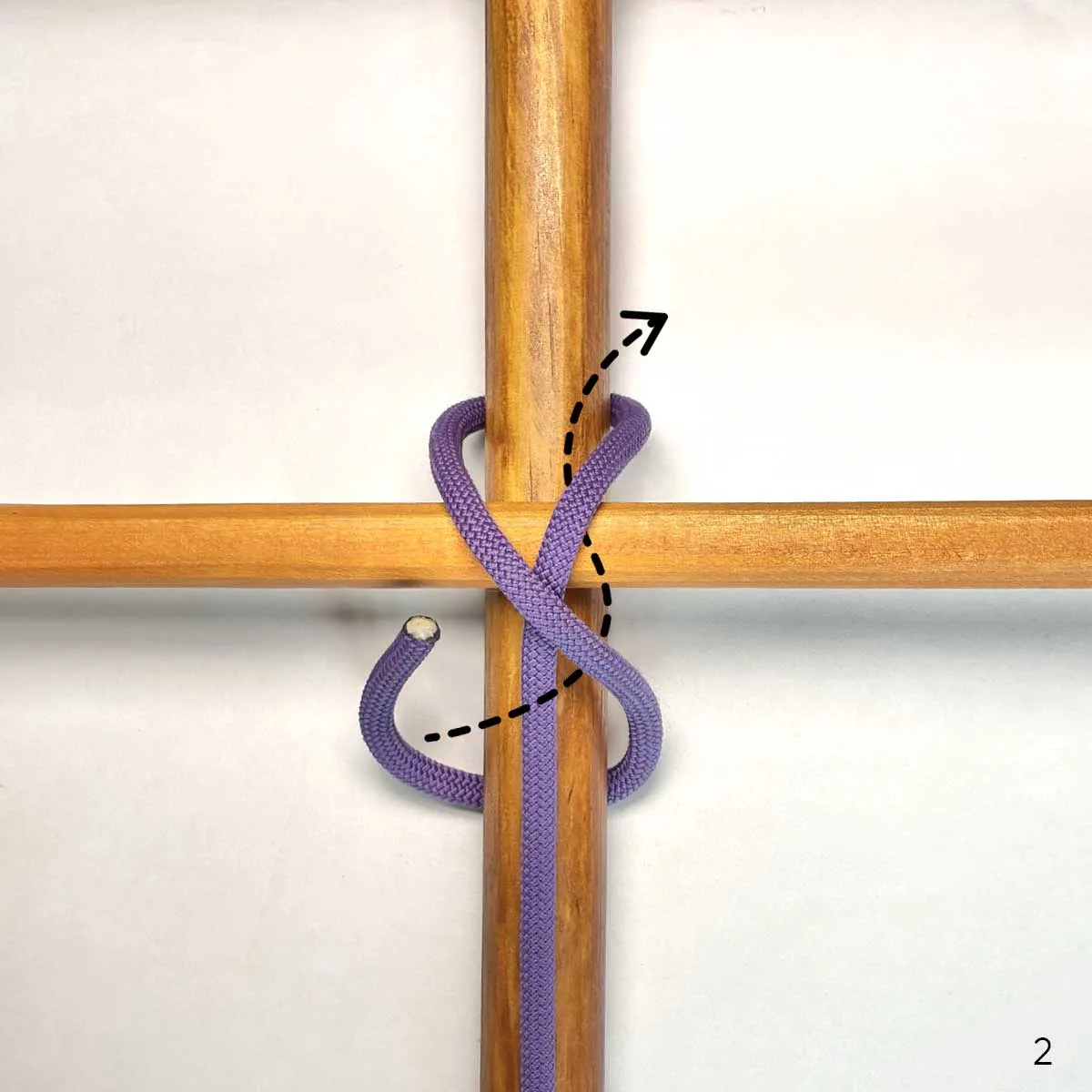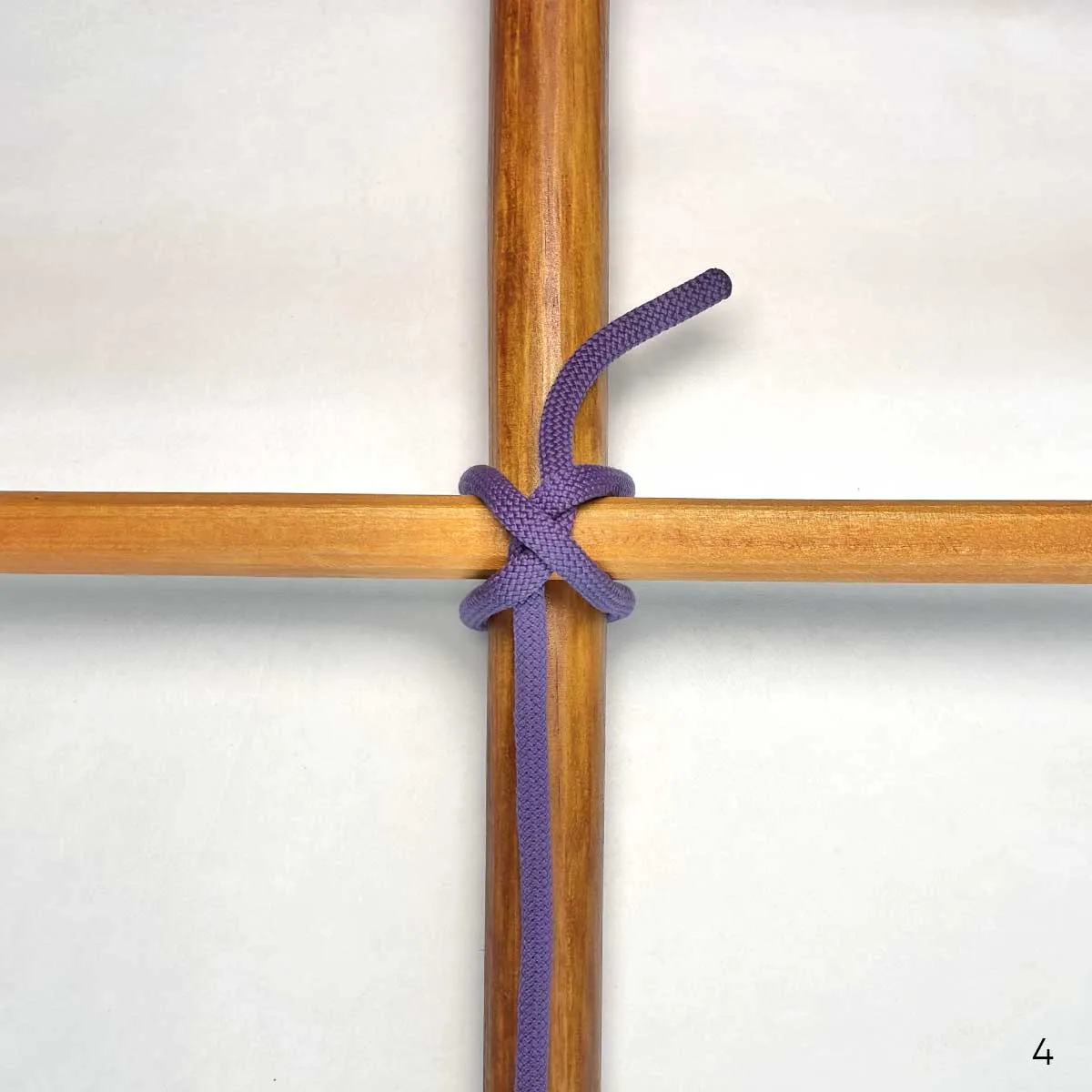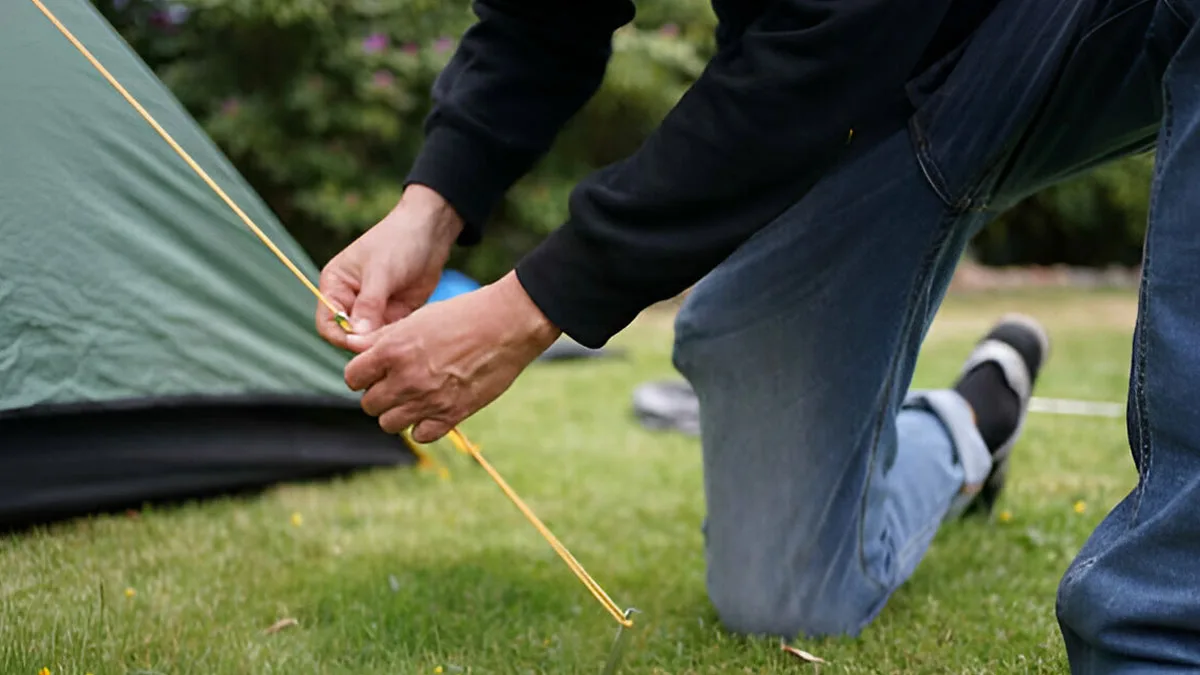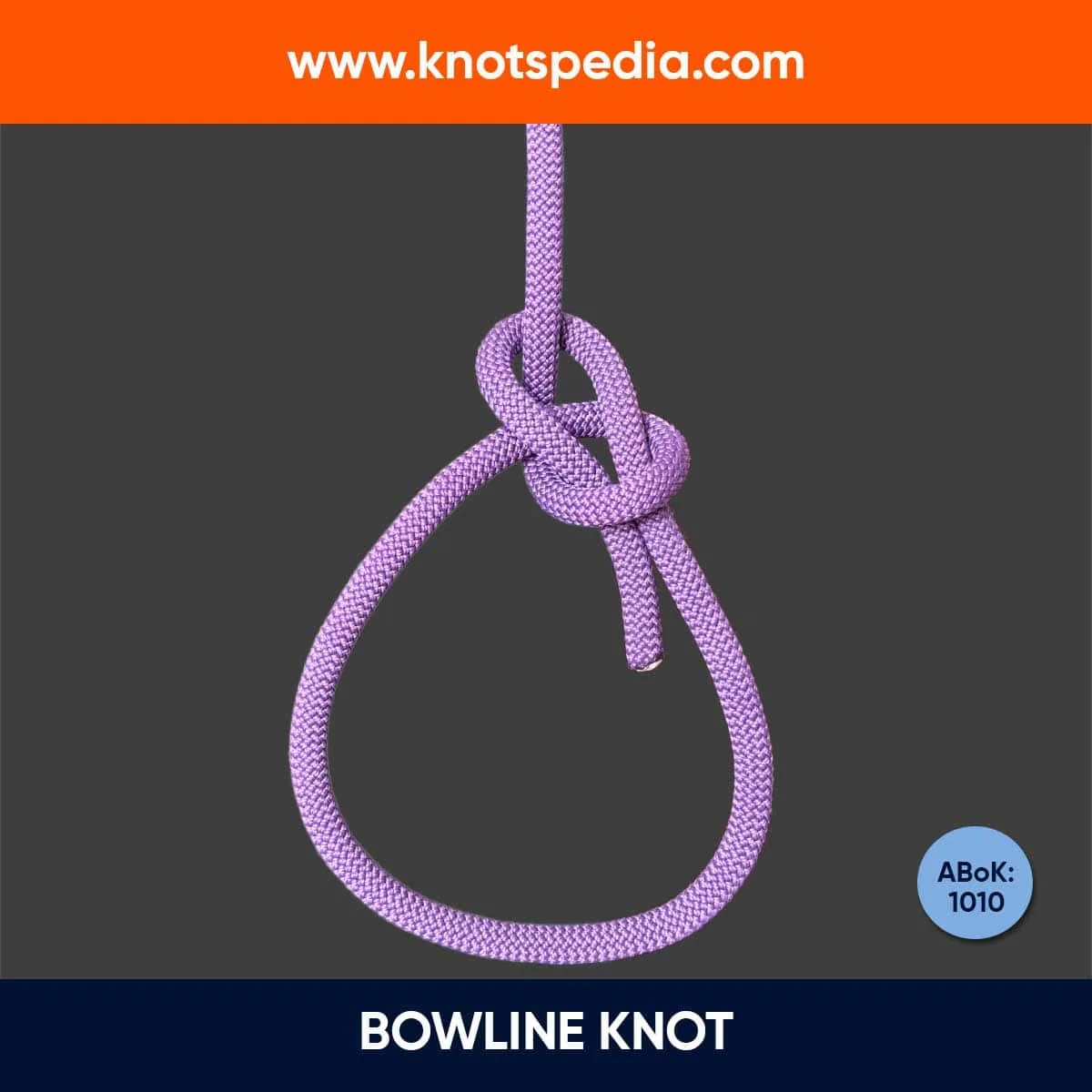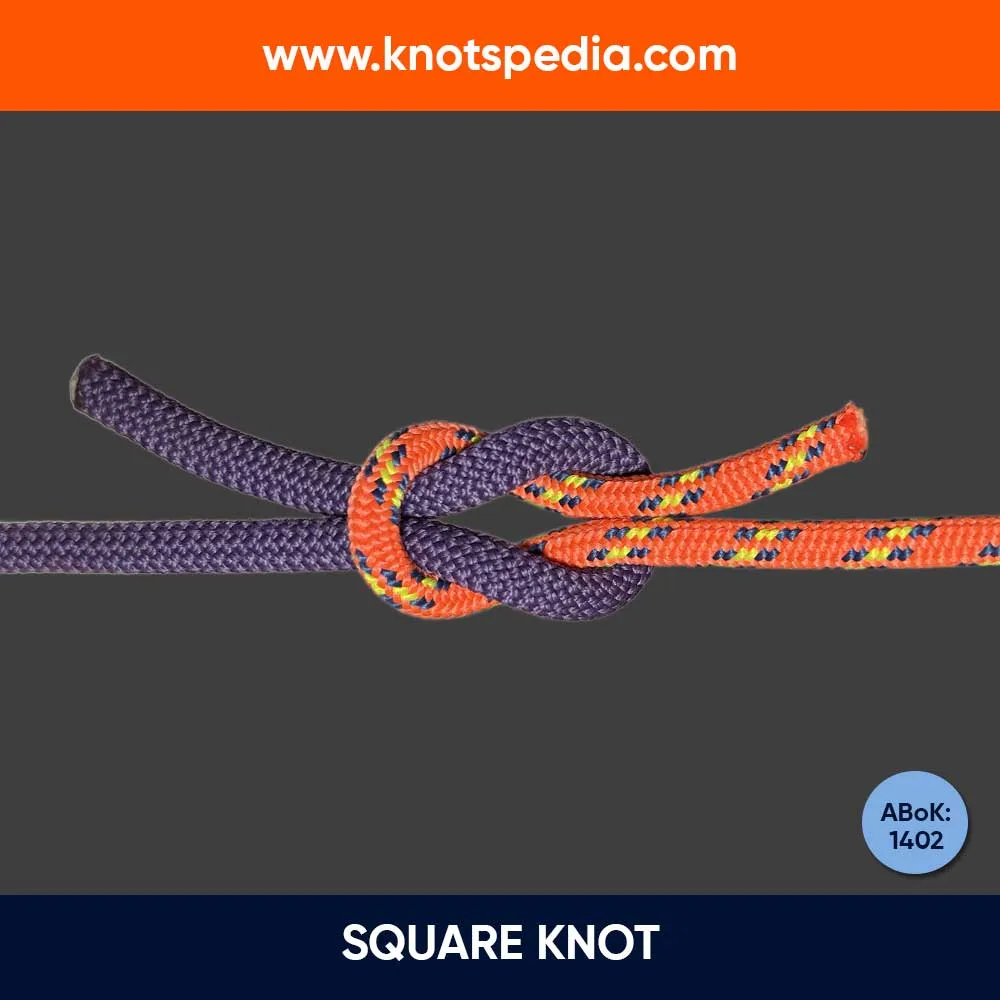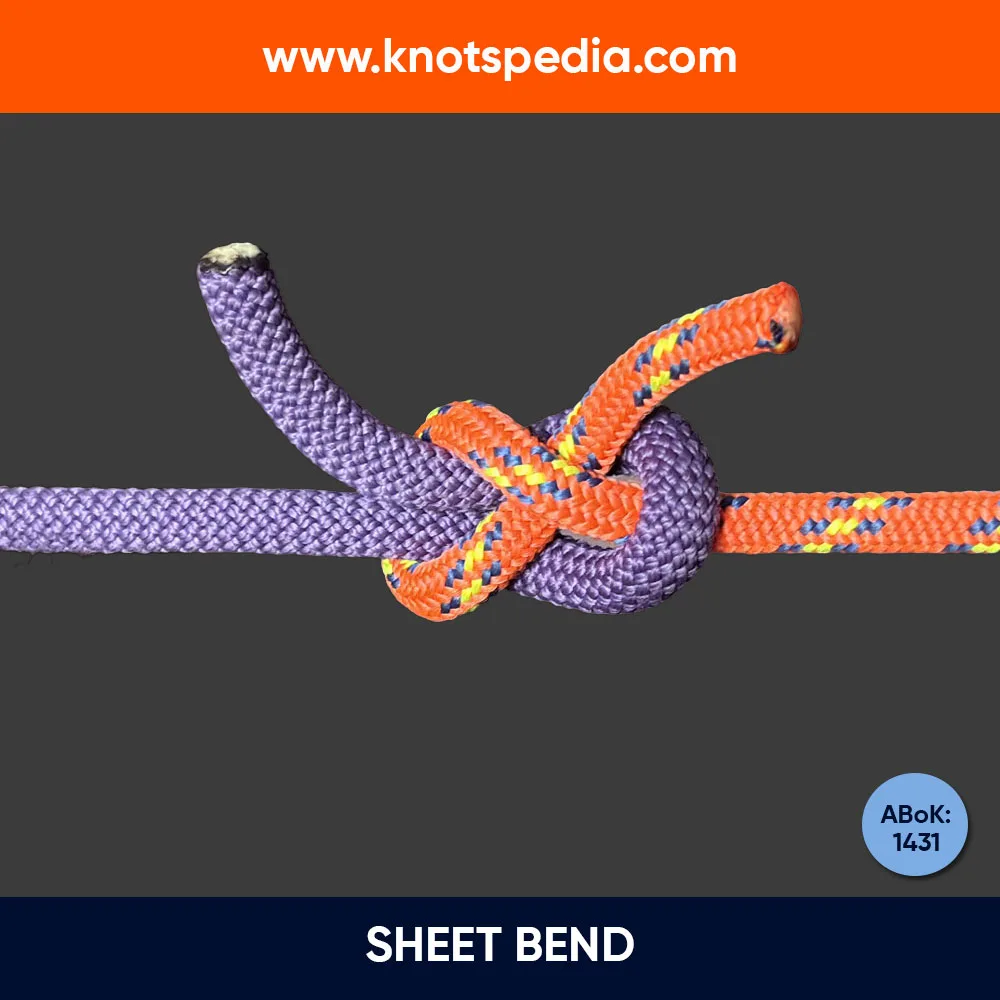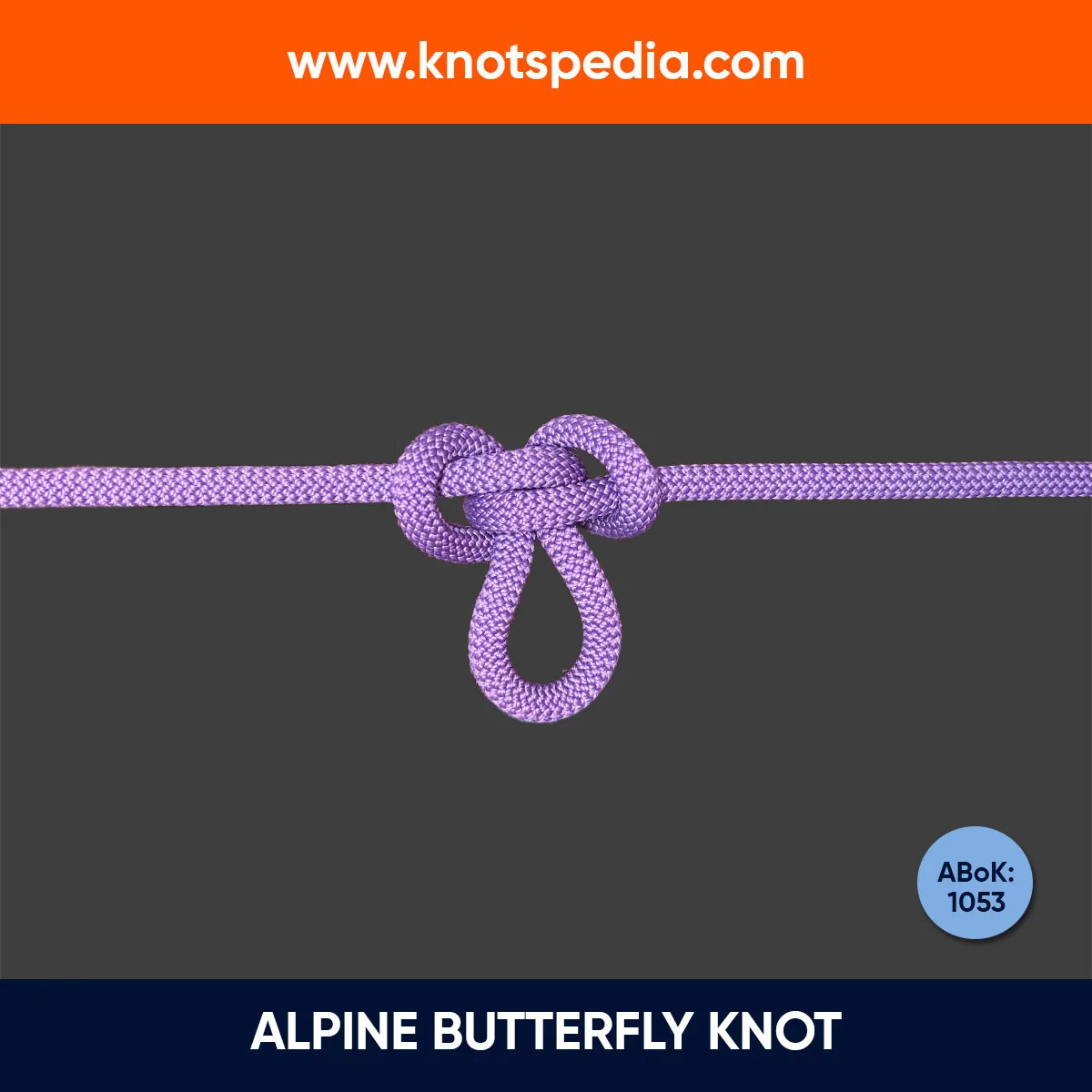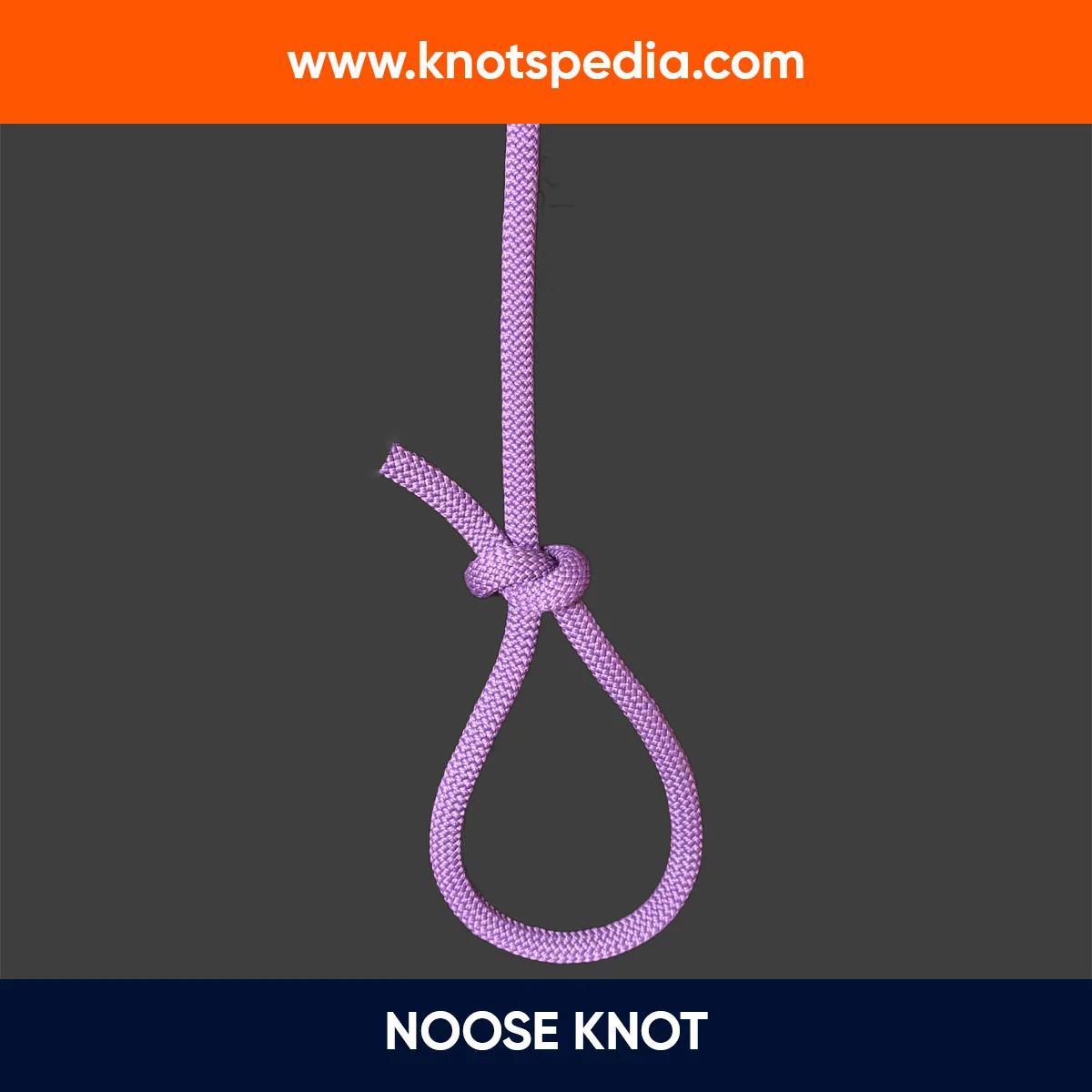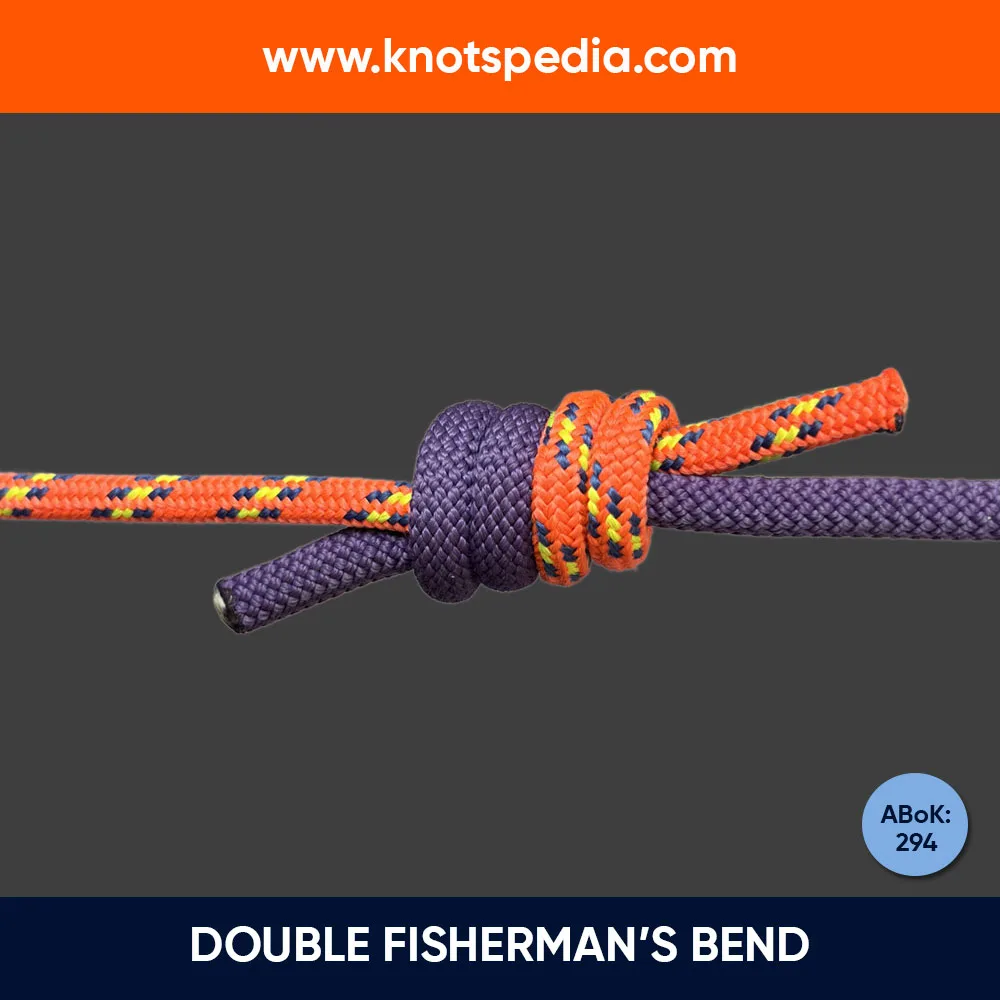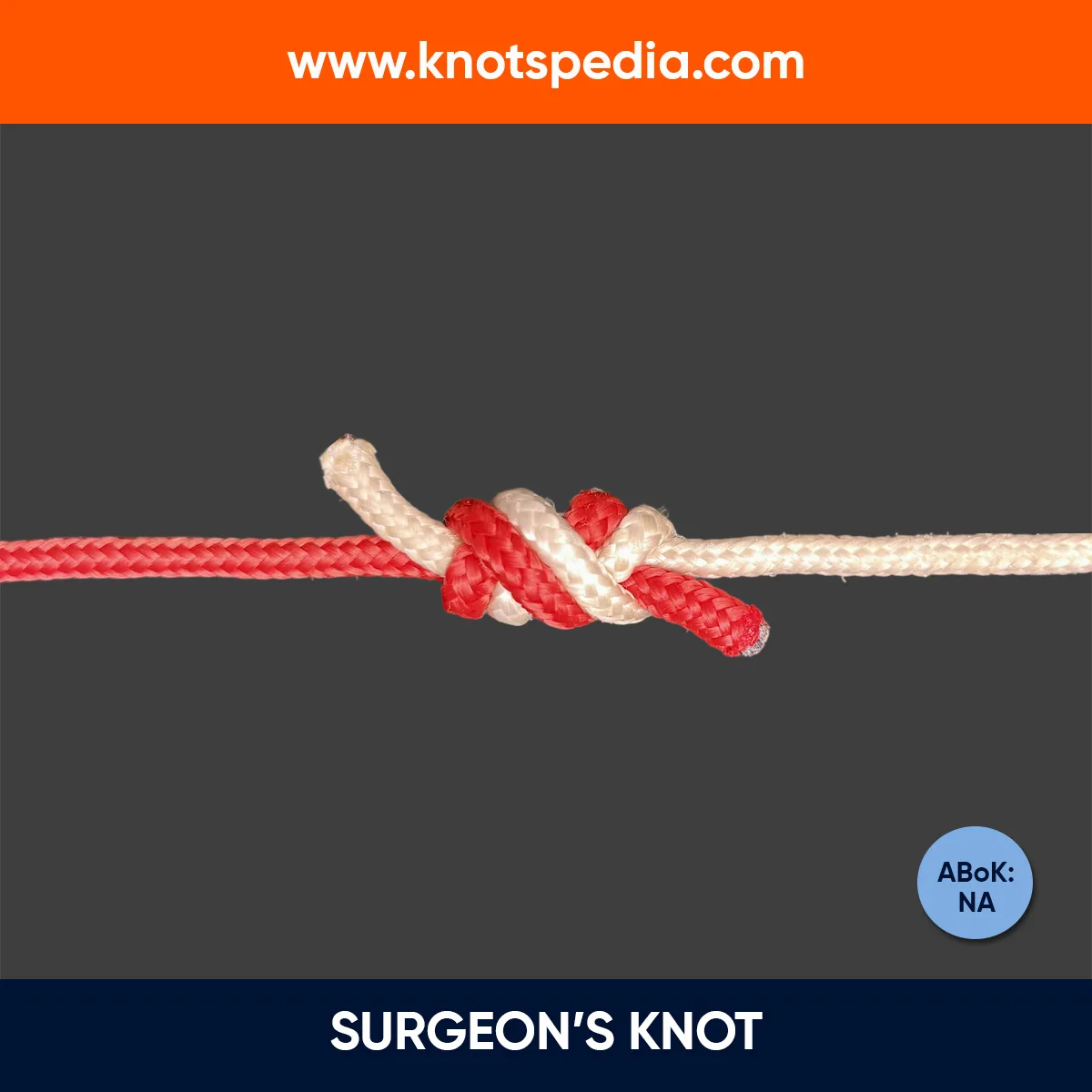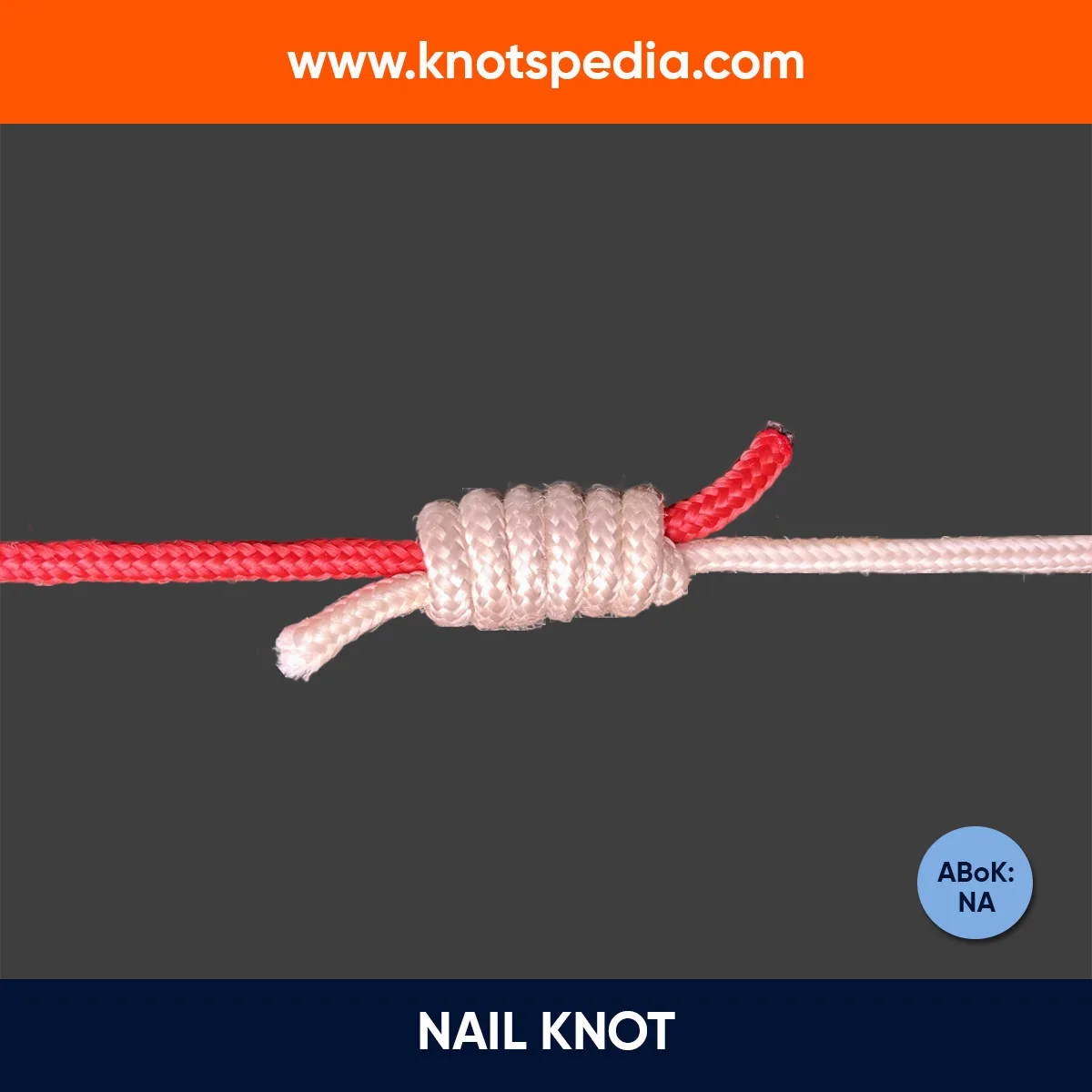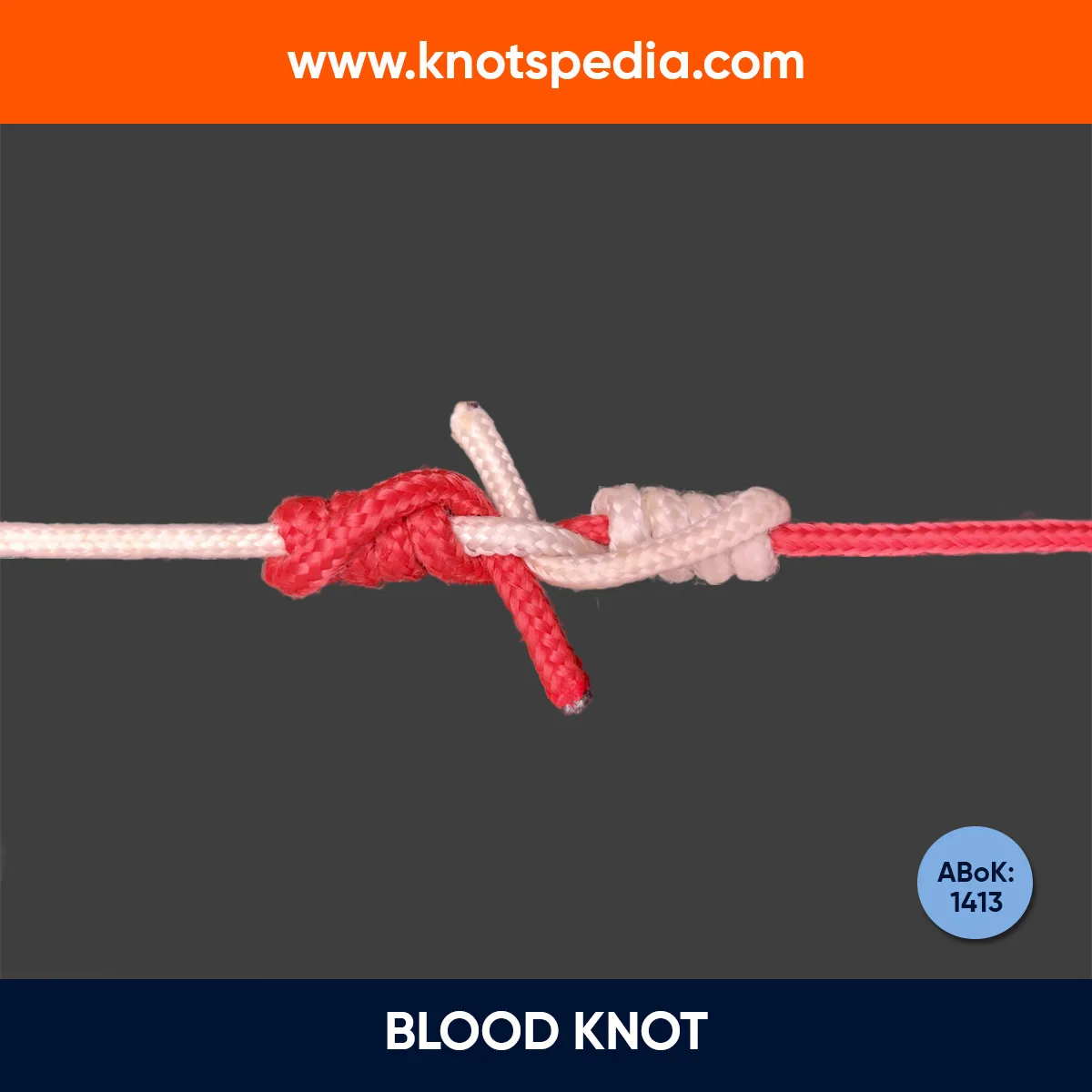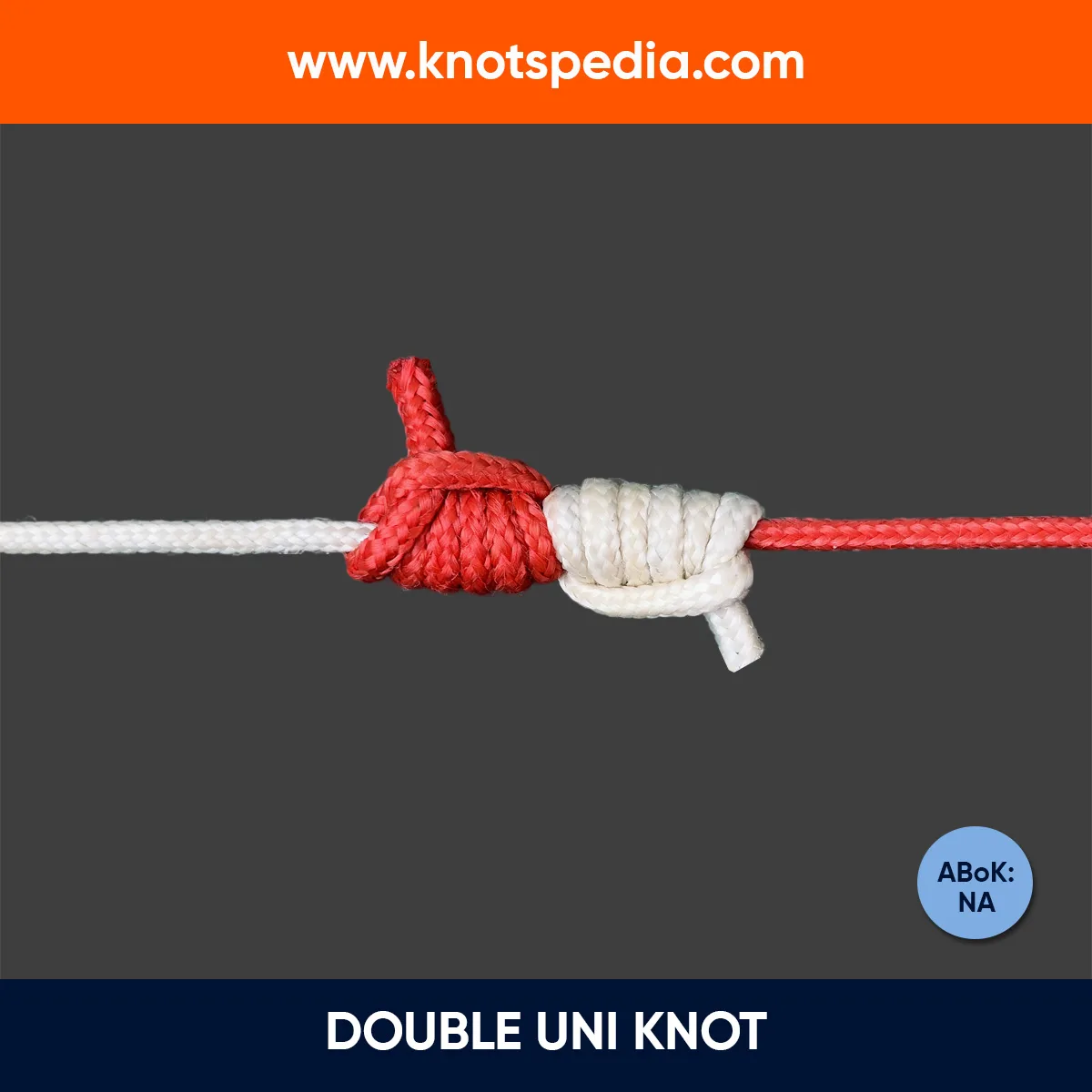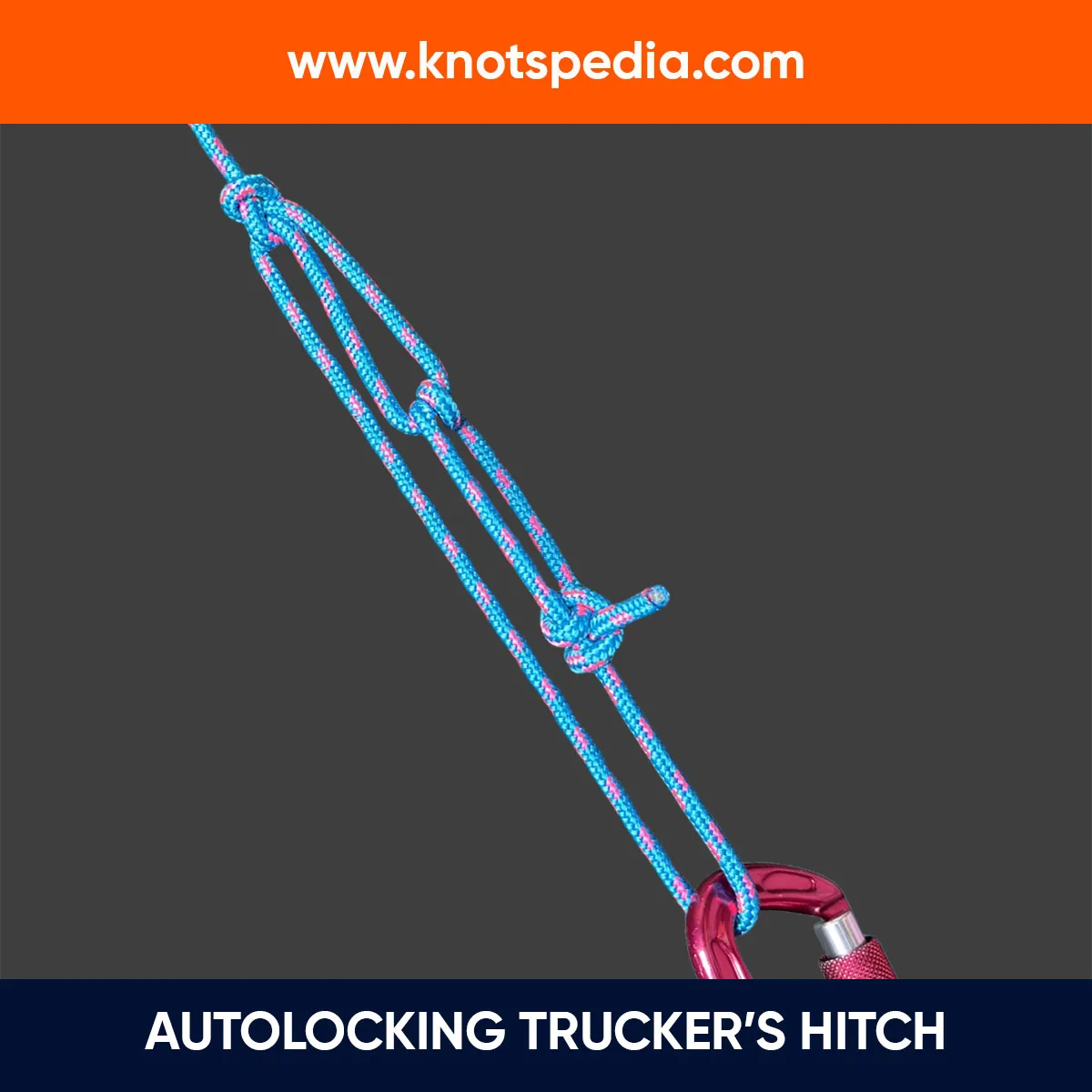The Transom Knot is a simple lashing knot that is used to secure two spars at right angles to each other.
It’s based on the Constrictor Knot and works well for light-duty lashing tasks.
It’s often used in camping, gardening, and bushcraft for quick and temporary setups.
Let’s learn it in detail.
Transom Knot Details
Type: Lashing Knot
Other Names: None
ABoK Reference: #1255
How to Tie a Transom Knot
- Pass the rope around the upright spar and bring it back across the rope.
- Pass the working end behind the upright spar below the horizontal spar.
- Pass it above the rope and tuck it under both turns.
- Pull both ends to tighten the knot.
Transom Knot Step by Step
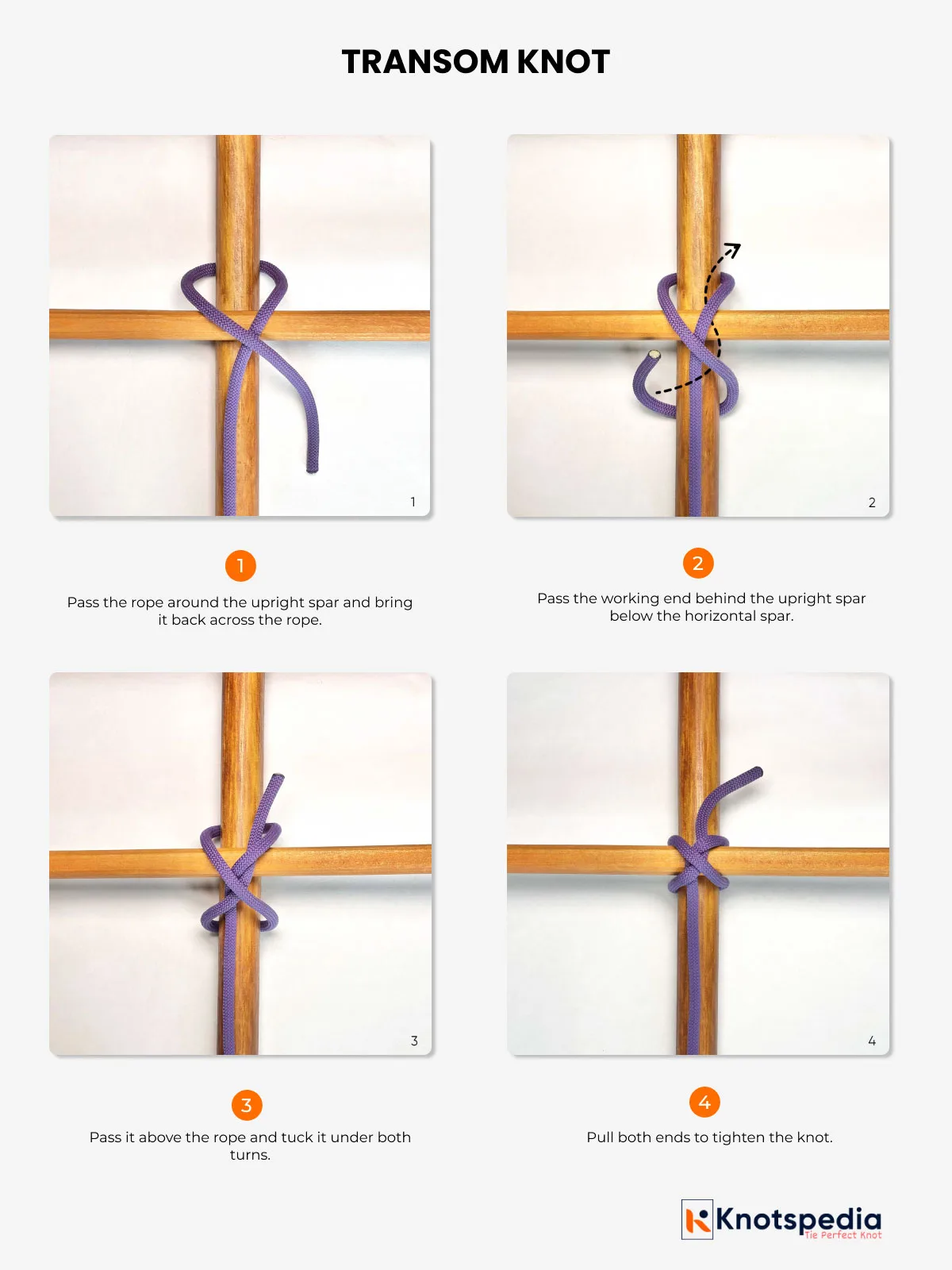
- If you need to use this knot as a permanent knot, tie a second Transom Knot on the opposite side and at right angle to the first one.
- Trim the ends of the rope for a neat finish.
- Add stopper knots like the Overhand Knot at both ends to prevent slipping.
Pros & Cons
- Simple and easy to tie.
- Beginner friendly.
- Holds two spars securely at right angles.
- Not a permanent knot—it tends to shake loose under cyclic loads.
- Not suitable for extended use.
Application and Uses
- Camping and outdoor activities: Make makeshift shelters, secure tent poles together, and create fences.
- Gardening: Make a temporary structure for plants like tomatoes or vines.
- DIY projects: Create display stands, crucifixes, or lightweight frames.
Other Lashing Knots
Diagonal Lashing
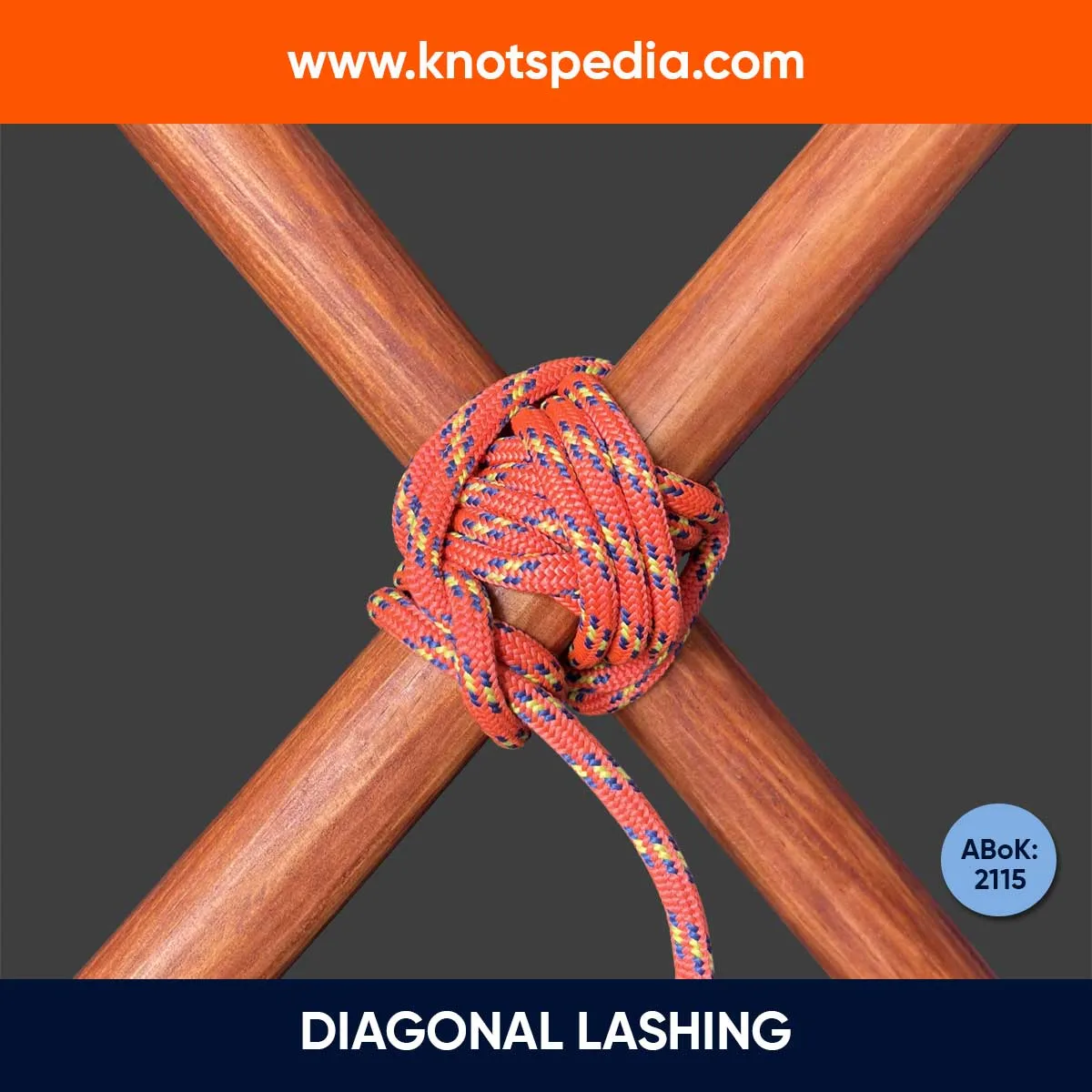
The Diagonal Lashing Knot is used to lash two spars together diagonally at a variety of angles.
It’s commonly used to make the cross brace of a rectangular framework to prevent racking.
But it’s more complex and takes more time to tie than the Transom Knot.
Square Lashing
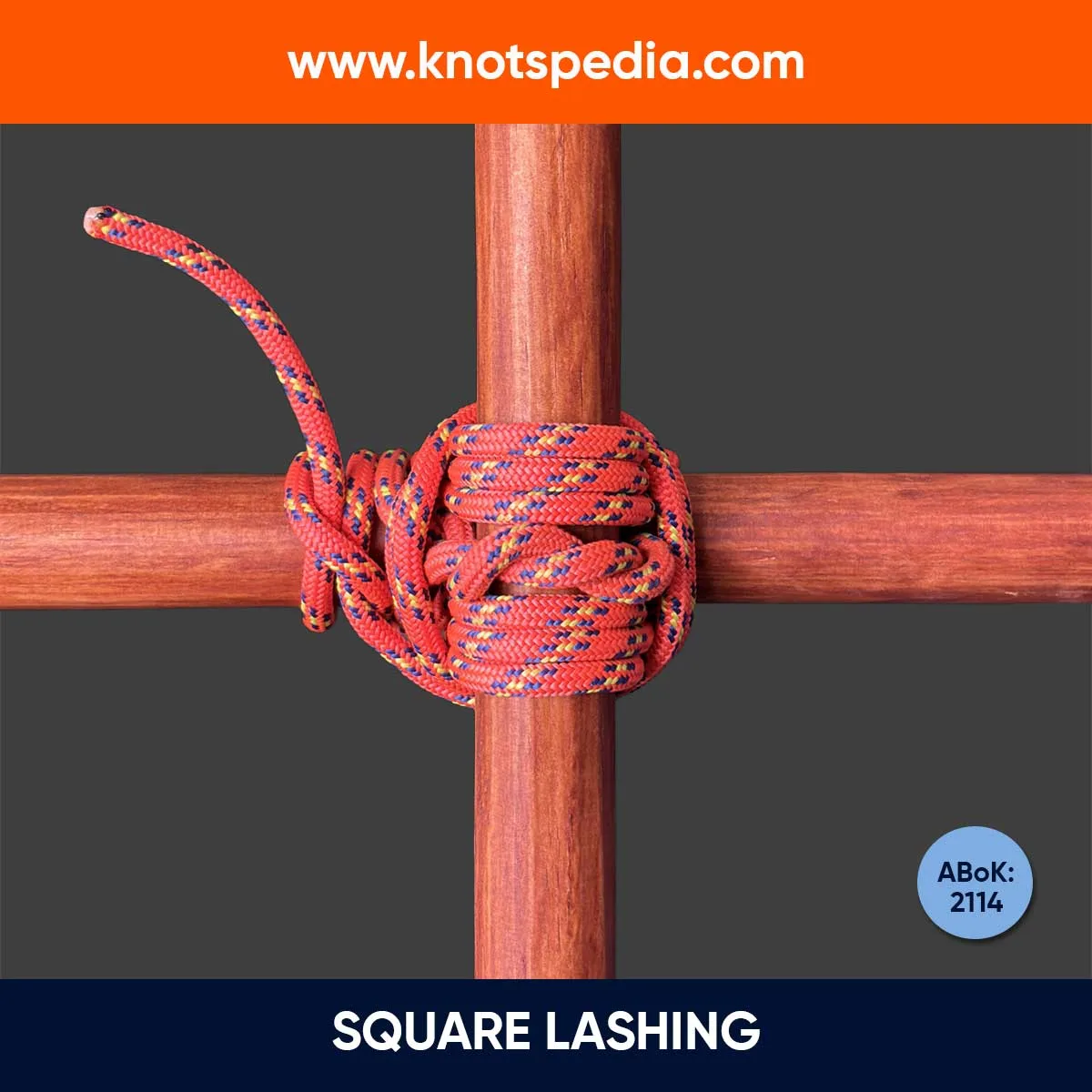
The Square Lashing is used to secure two poles perpendicular to each other.
It’s used for load-bearing or permanent structures like scaffolding.
But it takes more time and effort to tie—not ideal for quick or temporary setups.
Frequently Asked Questions
Is the Transom Knot the same as the Constrictor Knot?
No. Both knots are not exactly the same, but they share similar knotting techniques.
The crossing in the Transom Knot looks like the Constrictor Knot when looked at in relation to the upper spar.
But the Constrictor Knot binds a single object tightly, whereas the Transom Knot secures two objects at an angle.
Liked the article? Share it or Bookmark for future reference!
